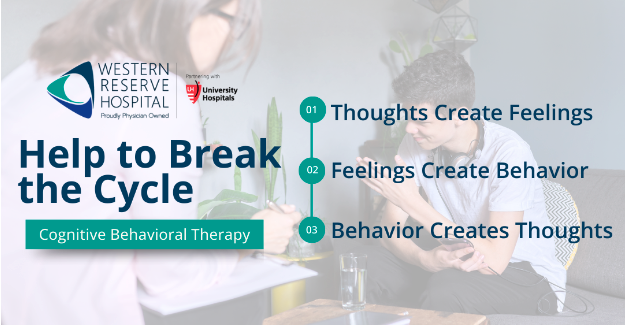Chronic pain is a persistent and debilitating condition affecting millions of people worldwide. For many, managing this pain can seem like an impossible challenge. However, Cognitive Behavioral Therapy (CBT) offers a powerful tool to alter the perception of pain, making it more manageable. Dr. Gary Sipps, a psychologist at the Center for Pain Management at Western Reserve Hospital, explains how CBT can be a game-changer for chronic pain patients.
The Role of Perception in Chronic Pain
Chronic pain is not just a physical experience; it is deeply intertwined with how the brain perceives and processes pain signals. Dr. Gary Sipps explains, "Whatever the source, cause, or nature of the pain in the body, it always routes its way up to the brain. Pain, especially chronic pain, is perceived within the brain and the mind." This means that altering the brain's perception of pain can significantly impact the patient's experience of pain.
CBT is particularly effective in this regard. Dr. Sipps highlights that CBT "helps people alter their perceptions to make pain more tolerable. It's not going to cure or dismiss the pain, but it can help the person experience a decrease in the intensity of the pain."
Pain perception is influenced by various factors, including past experiences, emotional states, and cognitive processes. Regardless of its nature or source, this perception can be influenced by what is otherwise in the brain. This means how we think and feel can significantly alter our pain experience.
CBT leverages this connection by helping patients change their thought patterns and emotional responses to pain. This shift in perception can lead to a more manageable and less overwhelming pain experience.
Core Principles of CBT in Managing Chronic Pain
The foundation of CBT lies in understanding and addressing the patient's learning history. Dr. Sipps states, "Every person has a learning history that goes back to the beginning of life, where we first learn about ourselves and our interactions with the environment." This learning history shapes our beliefs, expectations, and attitudes, including how we perceive pain.
In CBT, therapists work with patients to explore their pain and overall body experience history. This includes addressing any traumatic physical or emotional events that may have influenced their perception of pain. By confronting and challenging nonproductive mindsets, CBT helps patients develop healthier attitudes toward the origins, causes and sources of pain.
Typical CBT Sessions for Chronic Pain Patients
A typical CBT session for chronic pain management begins with an exploration of the patient's learning history and pain perception. Dr. Sipps explains, "We assess to determine their beliefs and resulting assumptions. This assessment is ongoing, as the therapist continually looks to see how patients talk to themselves, what beliefs they operate with, and what expectations they have."
These sessions aim to confront and challenge nonproductive beliefs and assumptions. Patients are guided to make realistic comparisons and develop achievable behavioral goals. This process is not just about discussion but also involves providing evidence that patients can accomplish their goals, reinforcing the idea that they are progressing.
Activities and Exercises Involved in CBT
CBT is not limited to therapy sessions; it extends into the patient's daily life through practical activities and exercises. "We usually assign homework, which involves setting and achieving goals," says Dr. Sipps. These goals can include behaviors such as walking, making important phone calls, or completing specific other tasks.
The idea is to help patients accomplish something of value, giving them a sense of achievement and altering their view of themselves as being immobilized by pain. This approach reinforces positive behaviors and encourages patients to take an active role in managing their pain.
Effective Cognitive Coping Strategies
Effective cognitive coping strategies are at the heart of CBT. These strategies involve recognizing the value of exploring thoughts and actions. Dr. Sipps describes two significant approaches: cognitive modification and cognitive reframing.
Cognitive modification involves addressing specific thoughts or words, helping patients avoid absolutes like "always" or "never." Patient thoughts and related beliefs such as “I NEVER get ANYTHING done!” are not accurate, helpful, or productive. On the other hand, cognitive reframing helps patients develop a new philosophy, seeing pain as an inconvenience rather than a life-ruining condition. Both approaches aim to build positive evidence through small, manageable steps and goals.
Addressing Emotional Challenges with CBT
 Managing chronic pain often involves dealing with a host of emotional challenges. Dr. Sipps highlights the importance of addressing these emotions: "CBT recognizes that patients will naturally have emotional reactions to chronic pain, such as frustration and disappointment. It's crucial to help them distinguish between these natural emotions and the negative patterns that can develop when they dwell on their limitations."
Managing chronic pain often involves dealing with a host of emotional challenges. Dr. Sipps highlights the importance of addressing these emotions: "CBT recognizes that patients will naturally have emotional reactions to chronic pain, such as frustration and disappointment. It's crucial to help them distinguish between these natural emotions and the negative patterns that can develop when they dwell on their limitations."
By accepting their emotions while challenging harmful dwelling, patients can prevent emotional responses from exacerbating their pain experience. For those with comorbid emotional conditions like PTSD or bipolar disorder, CBT becomes even more essential, addressing both the emotional challenges and the chronic pain simultaneously.
Measuring the Effectiveness of CBT in Pain Management
The effectiveness of CBT in managing chronic pain is measured by tracking progress toward various goals. Dr. Sipps explains, the setting and completion of "small, medium, and large goals is an important progress indicator. We also listen to patients' reports of their self-talk and how they confront their thoughts."
A reduction in the need for pain-related medications can also signify the effectiveness of CBT for some patients whose goals are to be less reliant on medication. Additionally, specific questionnaires like the Pain Disability Index and the Pain Stages of Change Questionnaire provide objective measurements. However, the most reinforcing measure is observing the positive changes and evidence in the patient's day-to-day life.
Challenges in Implementing CBT for New Patients
Implementing CBT for new patients comes with its own set of challenges. One significant challenge is understanding the patient's unique experience of pain. Dr. Sipps notes, "Each person expresses and experiences pain differently. Cultural factors, gender differences, and personal beliefs about pain can also be significant."
Building a non-judgmental, trusting relationship with the patient is essential to overcoming these challenges. Another challenge is addressing misunderstandings about pain, such as the belief that persistent pain signals mean something is still wrong. Dr. Sipps likens it to "a smoke alarm that didn't shut off." Challenging deeply held beliefs, such as the notion of pain as punishment, is also crucial.
Integrating Physical Activity into CBT Programs
Physical activity plays a fundamental role in CBT programs for chronic pain management. Chronic pain often leads to decreased movement and increased inertia. Dr. Sipps emphasizes, "We integrate physical activity by setting short-term, moderate-term, and long-term goals tailored to the individual's situation."
These activities include exercises recommended by medical providers or physical therapists and/or activities the patient enjoys. The goal is to help patients overcome sedentary habits and build a positive cycle of movement and achievement, reinforcing their capacity to manage pain.
Recommended Relaxation Techniques in CBT
Relaxation techniques are an integral part of CBT for chronic pain management. Dr. Sipps points out that the advent of smartphone apps has been beneficial, providing access to muscle relaxation and breathing techniques. "We frequently use biofeedback to enhance these techniques, linking cognitive associative cues with physical relaxation."
General muscle relaxation involves tensing and relaxing muscles with breathing, while progressive muscle relaxation is more comprehensive and often more effective. Biofeedback proves that the body responds positively, reinforcing the mind-body connection and aiding pain management.
Addressing Negative Thought Patterns
Negative thought patterns can exacerbate pain sensations, creating a vicious cycle. Dr. Sipps explains, "People often develop self-fulfilling prophecies, expecting pain and thus avoiding activities.” This increases people's tendencies to become more idle and sedentary, making them more vulnerable to such "doing nothing" behavior becoming a habit, leading to more negative thoughts, e.g. "I'm lazy," physical deconditioning, and ultimately increased sensitivity to pain. CBT helps patients recognize and break these cycles by confronting negative thoughts, labeling and challenging them, and encouraging small, positive steps.
By modifying thought content and reframing belief systems, patients can develop a more realistic and positive outlook on their pain, being "reasonably optimistic," ultimately improving their perception of pain.
Advice for Those Considering CBT for Chronic Pain Management
For those considering CBT for chronic pain management, Dr. Sipps advises, "Give it a try and commit to five or six sessions. It's important to understand that CBT is not about convincing you that the pain is all in your head. It's about helping you deal with the reality of your pain more effectively by addressing your beliefs, thoughts, expectations, and assumptions."
Developing a collaborative relationship with the therapist is vital to exploring goals and enhancing coping strategies.

